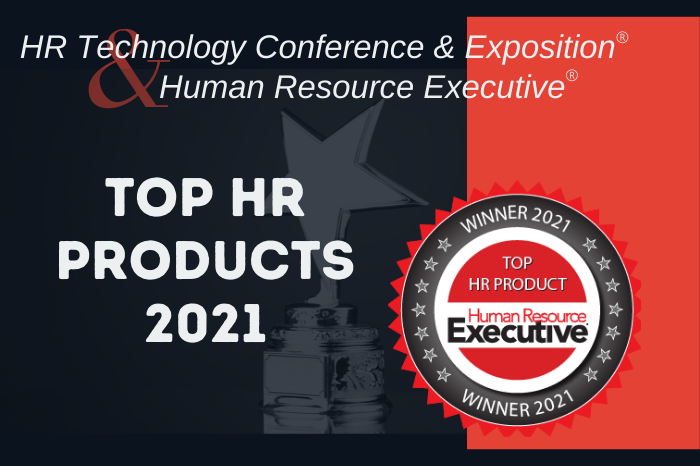As the chief people officer for Citrix, the digital workspace solution provider with roughly 10,000 employees worldwide, Donna Kimmel has her hands full. Not only did she have to oversee a global workforce that went full remote after the realities of COVID-19 disrupted the traditional in-person work environment last spring, but her team also continued to onboard more than 1,000 new employees.
Related: Can AI help reverse the Great Resignation?
Thankfully, she says, her company had been thinking about and planning for what a hybrid remote workforce would look like a year before the pandemic. In this HRE interview, Kimmel shares how Citrix eased some tech burdens of its remote workers, its plans for COVID-19 booster shots and why she wants tech that can help engage employees who might be looking for a new role.
HRE: What have you learned in the past 18 months as CHRO for Citrix?
-

Donna Kimmel of Citrix
Kimmel: The pandemic has been a big lesson for all of us. Citrix as a brand has always been about secure remote access for employees, so the pivot that happened in 2020 enabled us to partner with our clients even more closely. That is really our business: Being in this secure technology space that enables employees to work remotely.
Part of that move helped us take a look at ‘Are we also living our brand?’ We began to look at our ability to provide increased flexibility to our employees by utilizing our own technology and being able to operate in a more flexible hybrid way.
About a year before the pandemic, we started to ask what would this flexible work look like? What kind of change management would it need? I say that like a mind shift because even though we have been virtual and global–we’ve got employees all around the world–there’s still something about the [traditional] manager and leadership mindset [where they can see their workers in person].
HRE: How quickly did you go remote?
Kimmel: We went remote within a week. There were concerns about productivity, engagement and culture, but we found that in our line of business, we were able to pivot successfully. Last December, we announced that we were going to continue with a flexible hybrid approach beyond the pandemic and that it would be based on employee choice.
We want our employees to feel comfortable about coming into the office. We just announced that on Oct. 1, for anyone coming into the office, we are requiring proof of vaccination.
Related: Vaccine mandates now required: What to know about Biden’s new rules
HRE: Will you require booster shots?
Kimmel: That is the next question we’re wrestling with. As we come into flu season, we are encouraging employees who have been vaccinated to talk with their physicians and look at getting a booster at the same time they’re doing their flu shot. We’re going to encourage people to get booster shots.
 HRE: Did you discover a digital divide among your employees? Did you have to roll out faster laptops, larger screens or external keyboards? Did some workers have substandard wifi?
HRE: Did you discover a digital divide among your employees? Did you have to roll out faster laptops, larger screens or external keyboards? Did some workers have substandard wifi?
Kimmel: We provided a $1,000 bonus to all employees last March to help defray costs that they might be having from working from home to enable them to set up. We did a flat amount because the cost of a laptop or a chair in China or Bangalore is really the same so we didn’t get into any regional differences and this was greatly appreciated by all of our employees. We also offer a $500 stipend for any new hires coming on board.
HRE: Citrix has about 10,000 employees. How many new employees has your team onboard since the lockdown started?
Kimmel: Probably 1,500. We definitely kept our hiring pace. We found that some employees may not have had the best circumstances to be able to work from home due to family members or small apartments where you might’ve had a roommate or not great wifi. Obviously, we can’t fix infrastructure but we did what we could to help employees and we’ll continue to do so.
HRE: What’s on your HR technology wishlist?
Kimmel: One of the things that feels really pressing right now is this concept of the internal marketplace. If we think about losing talent to the outside, one of the reasons sometimes is that people may not see a career path for themselves and it’s not just the traditional ladder where you’re climbing in a vertical direction.
[They wonder] how do I think about my career across the organization? What are those core skill sets that would enable me to take on a new role in a different function that I never even thought about? I’ve had a couple of people from the finance side and sales ops come into HR and be able to bring their knowledge and experience into our organization to build out our business intelligence or to build out our recruiting function. How do we help employees identify what other opportunities there are in the company? So they can think about their careers in a more broad way.
Related: HR Tech and ‘HRE’ announce the Top HR Products of 2021
It links to skilling, upskilling and re-skilling. How do you keep the talent inside of your organization (and) vibrant with new knowledge while also providing them the opportunity to take on new things that maybe they hadn’t even thought of?
HRE: How could technology help?
Kimmel: Is there a technology that helps us be able to do it because it’s complicated? [she wondered] There’s clearly change management around it. When you create an open marketplace, it challenges practices of the past. How long does somebody need to be in their role? Or how long does somebody need to be in the company before we let them apply for a new role? Those are vestiges of the past that have to be blown up and we have to think about it differently.



